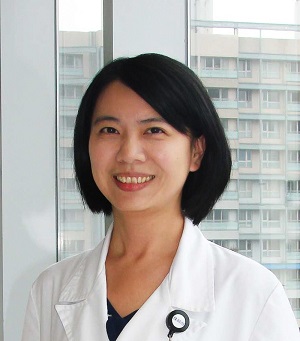11.2020 Life Guide
A new hope for refractory depression: repetitive transcranial magnetic stimulation
Dr. Jiang Huiling, psychiatrist, Far Eastern Memorial Hospital /


With the progress of science and technology, more complex interpersonal relationships and unpredictable environment, people in the 21st century are under great external pressure, and the shadow of depression is also quietly spreading. This issue of "health column" will introduce you to new options for the treatment of depression, hoping to bring back a bright smile for patients.
"Depression" is a very common disease. In addition to easily causing depression and lack of vitality, it may also have negative effects such as the decline of thinking ability, the decline or loss of occupational function. Because the causes of depression are quite diverse, in addition to psychological treatment, we also need to deal with physiological factors, such as the imbalance of serotonin in the brain, and the low functional activity of specific areas of the brain. Therefore, drug therapy is still one of the most common and important options for the treatment of depression.
Although there are many drugs available for the treatment of depression, there are still about one-third of the patients who can not effectively improve their symptoms even if they are actively treated. This kind of symptom is called "refractory depression". In order to further assist such patients, Far Eastern Memorial Hospital has introduced a repetitive transcranial magnetic stimulation (rTMS) therapeutic instrument, which can induce a weak current through magnetic waves to repeatedly stimulate the prefrontal lobe of the brain to activate the brain regions with low function. After some areas are activated, they will follow the internal circuits of the brain and transmit the activated signals to the brain areas that manage emotional regulation, thus improving the symptoms of depression. This treatment has been approved in the United States for more than 10 years, while Taiwan was approved in April 2018. It can be used to treat refractory depression.
More than 60% of patients with non-invasive new therapy can significantly improve
Repetitive transcranial magnetic stimulation (rTMS) is performed five times a week, each course of treatment is about 30-40 minutes. It can be carried out in the way of appointment. There is no need for anesthesia and hospitalization before operation. After the treatment, the patients can carry out activities in general life as usual. It is a non-invasive and high safety treatment. Some patients in two weeks of treatment (10 courses) can feel the symptoms improved significantly, if the course of treatment for more than four weeks, the symptoms improved better. The current research shows that about 60% of patients after repetitive transcranial magnetic stimulation treatment, symptoms improved significantly, such as: better spirit, less negative emotions, more motivated to do things and so on.
The treatment process of repetitive transcranial magnetic stimulation (TMS) varies with the individual's constitution and treatment course design. However, it is roughly as follows: first, let the patient adjust to a comfortable sitting position on the treatment chair. Due to the difference in the head shape, size and brain structure of each person, the patient should wear a special head cover before treatment to mark the brain location area. When positioning, the therapist will first use magnetic stimulation of the patient's brain area in charge of movement, so that the patient's hand muscles contract, and then gradually adjust according to the patient's response, so as to find the most appropriate stimulation position and calculate the appropriate stimulus intensity. After these parameters are determined, the therapist will move the stimulation position to the target brain area for the treatment of depression, and let the instrument give magnetic stimulation according to the set parameters to complete a complete course of treatment.
At present, this kind of treatment belongs to self funded project, and the health insurance has not paid, so the cost burden is relatively high. However, antidepressants commonly used in the market may produce systemic side effects, such as loss of appetite, gastrointestinal discomfort, sexual dysfunction, dizziness, etc. the side effects of repetitive transcranial magnetic stimulation only occur in local areas, such as headache, dizziness, scalp discomfort (magnetic stimulation), twitching of facial muscles caused by magnetic stimulation during treatment, etc Most of the patients will be relieved or gradually relieved after treatment. Most patients can maintain their original quality of life, including going to school and working as usual.
Am I suitable for repetitive transcranial magnetic stimulation?
Although the safety of repetitive transcranial magnetic stimulation is high, there are still some patients who may not be suitable, such as: metal implants in the body (including: electronic ears, pacemakers, cardiac stents, metal clips or coils for hemangiomas, etc.), history of epilepsy, taking drugs that can easily induce epilepsy, brain trauma, etc. In addition, if you are pregnant or planning to be pregnant, have brain disease such as brain tumor or stroke, have a family history of epilepsy, and other diseases, it is recommended to provide it to the doctor for evaluation before treatment.
Depression not only causes disability of patients, but also increases the overall burden of family and society. It has been listed as the top three diseases affecting the world by the World Health Organization (who). It is expected that the popularization of repetitive transcranial magnetic stimulation (rTMS) can provide more treatment options for patients with depression and obtain higher recovery opportunities.



















